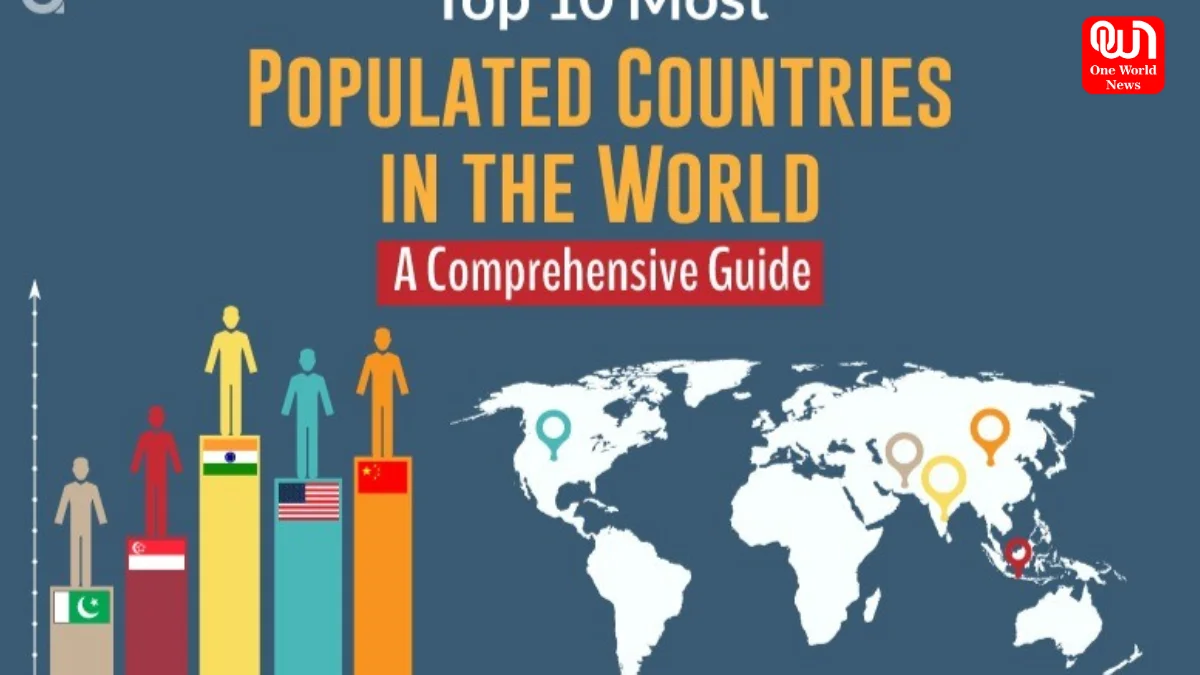Top 10 Most Populated Nations of the World in 2025: Populated Nations of the World
Explore the top 10 most populated nations of the world in 2025 and understand global population trends in these densely inhabited countries.
Top 10 Most Populated Nations of the World in 2025: A Comprehensive Look at the Populated Nations of the World
Introduction to Populated Nations of the World
Population plays a crucial role in shaping a country’s economy, culture, and global influence. In 2025, several nations continue to dominate the world stage in terms of population. Understanding the most populated nations of the world provides insights into urban planning, economic growth, and social dynamics. This article highlights the top 10 most populated nations of the world in 2025, along with key population facts and trends.
China: Leading the Populated Nations of the World
China remains the world’s most populated country in 2025, with an estimated population exceeding 1.41 billion. Its massive population contributes to its global economic influence, technological advancement, and cultural heritage. Despite facing challenges such as aging populations and urban overcrowding, China continues to maintain its position as the leader among the populated nations of the world.
India: Rapidly Approaching China
India, the second most populated nation in the world, is witnessing rapid population growth. With over 1.40 billion people in 2025, India is projected to surpass China in the near future. This country’s population diversity, youth demographic, and expanding urban areas play a key role in its economic development. India’s population trends highlight challenges in infrastructure, healthcare, and education systems.
United States: The Third Most Populated Nation
The United States ranks third among the populated nations of the world, with a population of approximately 338 million. Immigration, urbanization, and natural growth contribute to its steady population increase. The U.S. population is diverse and concentrated in major metropolitan areas such as New York, Los Angeles, and Chicago, influencing the country’s social and economic dynamics.
Indonesia: Southeast Asia’s Population Giant
Indonesia, the largest country in Southeast Asia, ranks fourth in global population in 2025 with over 279 million people. Its vast archipelago, cultural diversity, and growing urban centers like Jakarta make it a key player among the populated nations of the world. Population management in Indonesia focuses on urban planning and resource distribution to meet the needs of its citizens.
Pakistan: Rapid Growth in South Asia
Pakistan holds the fifth position among the most populated nations of the world, with a population exceeding 242 million. High birth rates and a young demographic contribute to its rapid growth. Pakistan faces challenges in providing adequate education, healthcare, and employment opportunities for its growing population while striving to maintain economic stability.
Nigeria: Africa’s Population Powerhouse
Nigeria is Africa’s most populous country and the sixth most populated nation in the world, with around 239 million people in 2025. Its population growth is fueled by high fertility rates and a young population. Nigeria’s expanding population offers opportunities for economic growth, innovation, and regional influence, but it also poses challenges for infrastructure and social services.
Reads more: Karwa Chauth 2025 Date: Shubh Muhurat And Moonrise Timing For Married Women
Brazil: Latin America’s Largest Nation by Population
Brazil ranks seventh among the populated nations of the world, with over 216 million people. Its population is concentrated in urban hubs like São Paulo, Rio de Janeiro, and Brasília. Brazil’s diverse population supports its cultural richness, economic potential, and regional leadership in Latin America. Population growth trends in Brazil emphasize urban planning and social welfare programs.
Bangladesh: Dense Population in a Small Area
Bangladesh ranks eighth in global population with around 178 million people. Despite its relatively small land area, it is one of the most densely populated countries in the world. Challenges include urban congestion, resource management, and climate change effects. Bangladesh’s population density highlights the importance of sustainable development and effective governance.
Russia: Large Land, Smaller Population Density
Russia ranks ninth among the populated nations of the world with approximately 143 million people. While geographically the largest country, its population density remains low due to vast rural and remote regions. Russia’s population trends emphasize urban concentration in cities like Moscow and St. Petersburg, with demographic policies aimed at stabilizing population decline.
Mexico: Latin America’s Growing Population
Mexico ranks tenth on the list of the most populated nations of the world in 2025, with a population of about 131 million. Urban areas such as Mexico City, Guadalajara, and Monterrey are highly populated and drive economic and cultural development. Population management in Mexico focuses on healthcare, education, and sustainable urban growth to support its citizens effectively.
Read more: Celebrating World Post Day: History, Importance, and Global Postal Contributions
Conclusion: Understanding the Populated Nations of the World
The top 10 most populated nations of the world in 2025 are China, India, the United States, Indonesia, Pakistan, Nigeria, Brazil, Bangladesh, Russia, and Mexico. Each nation faces unique challenges and opportunities related to population growth, urbanization, and resource management. Keeping track of population trends is essential for planning, governance, and global economic strategies. The populated nations of the world continue to shape global culture, economics, and politics through their demographic presence.
We’re now on WhatsApp. Click to join.
Like this post?
Register at One World News to never miss out on videos, celeb interviews, and best reads.








